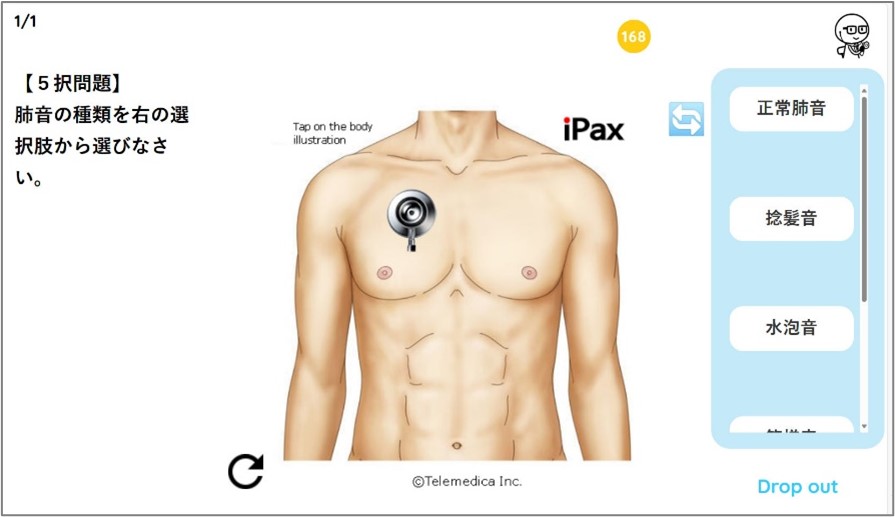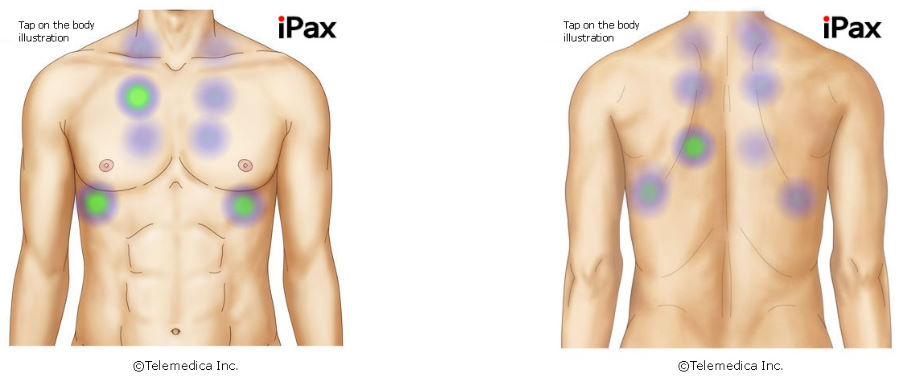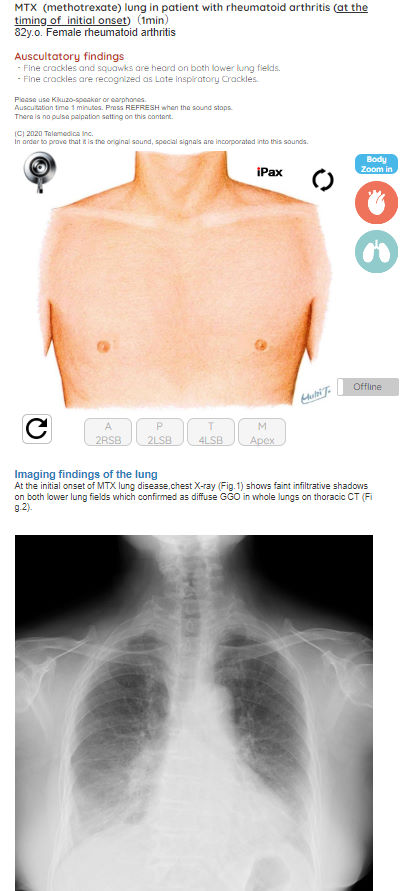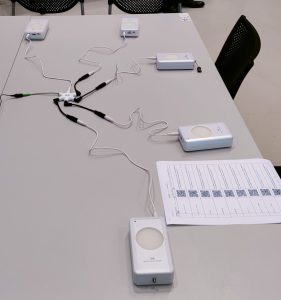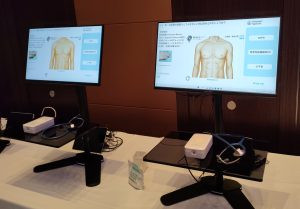Cases
Cases
Example of using iPax and Kikuzo at Nagasaki International University Faculty of Pharmaceutical Sciences
The Faculty of Pharmaceutical Sciences at Nagasaki International University has been focusing on physical assessment education. Previously, training was centered on mannequins, but since last year they have been using our iPax and Kikuzo for auscultation training and exams.
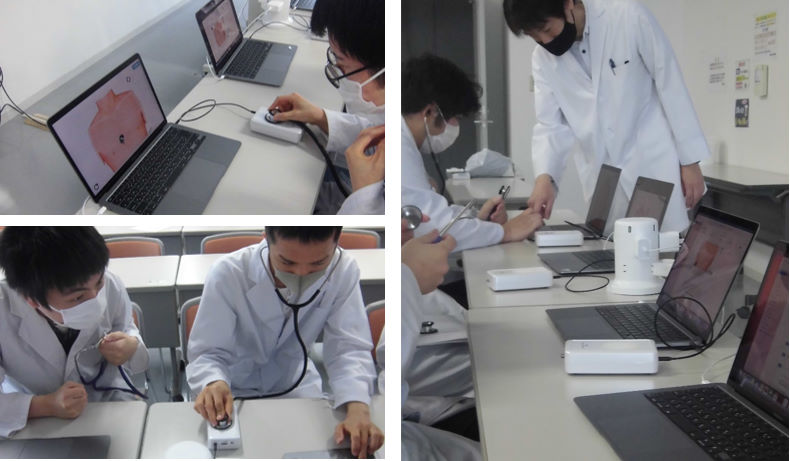
Photo provided by: Professor Kosuke Kanda, Faculty of Pharmaceutical Sciences, Nagasaki International University
Using the iPax, you can practice listening to sounds by operating the chest piece on the computer screen, and you can also take quizzes and tests (Photo 1). This time, they used the “auscultation site recording function” (Photo 2) to record the areas that students auscultated.
Exercises and self-study from mid-September 2023
Final exam: Mid-October 2023
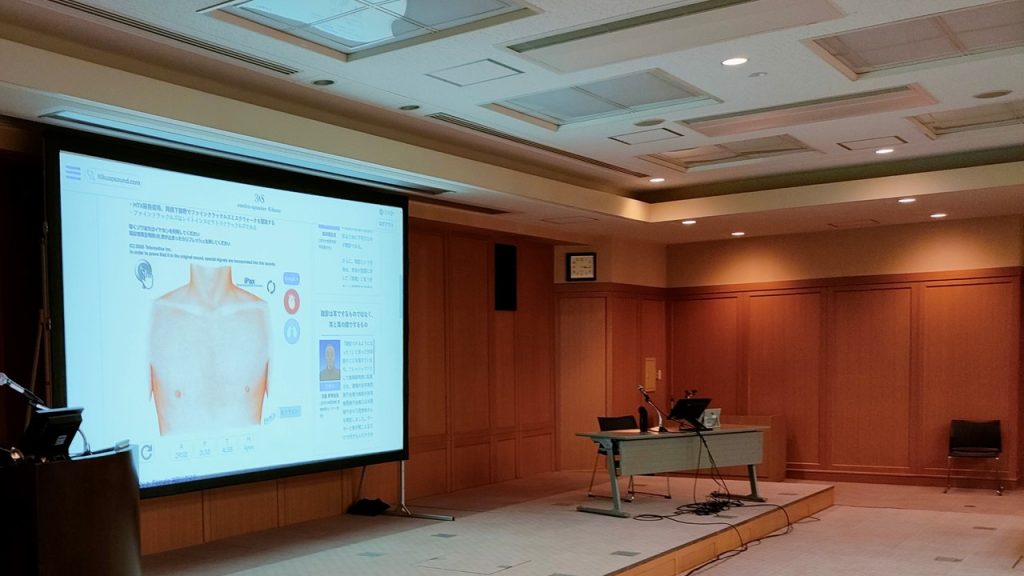
Example of using iPax at a Respiratory seminar
Below is one example of using iPax and Kikuzo.
This time, the iPax quiz was used at the respiratory seminar for residents (held on July 8, 2023). We received comments from Dr. Hiroyuki Minemura, Department of Pulmonary Medicine, Fukushima Medical University.
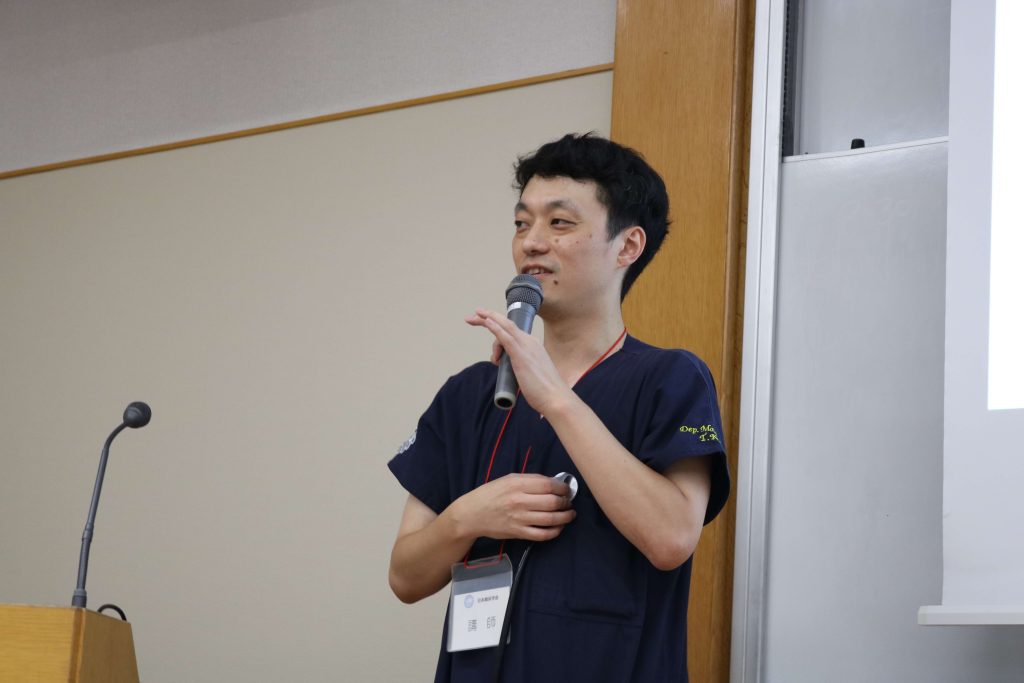
Evaluation of iPax at a hands-on session of the Japan Society of Early Mobilization
In a hands-on session of the Japan Society of Early Mobilization (June 24, 2023), iPax was used.
Mr. Tomoya Kuroda, who served as a lecturer, gave us his impressions of iPax, so we will introduce it below.
***
The lecture was very well received. Thank you very much.
We asked the participants to actually listen to the sound and confirm the difference between normal and abnormal sounds and the difference in sound depending on the part.Due to the sound equipment at the venue, we had a problem with not being able to make loud noises, but since it was a seminar with a small number of people, we were able to finish without any major problems.
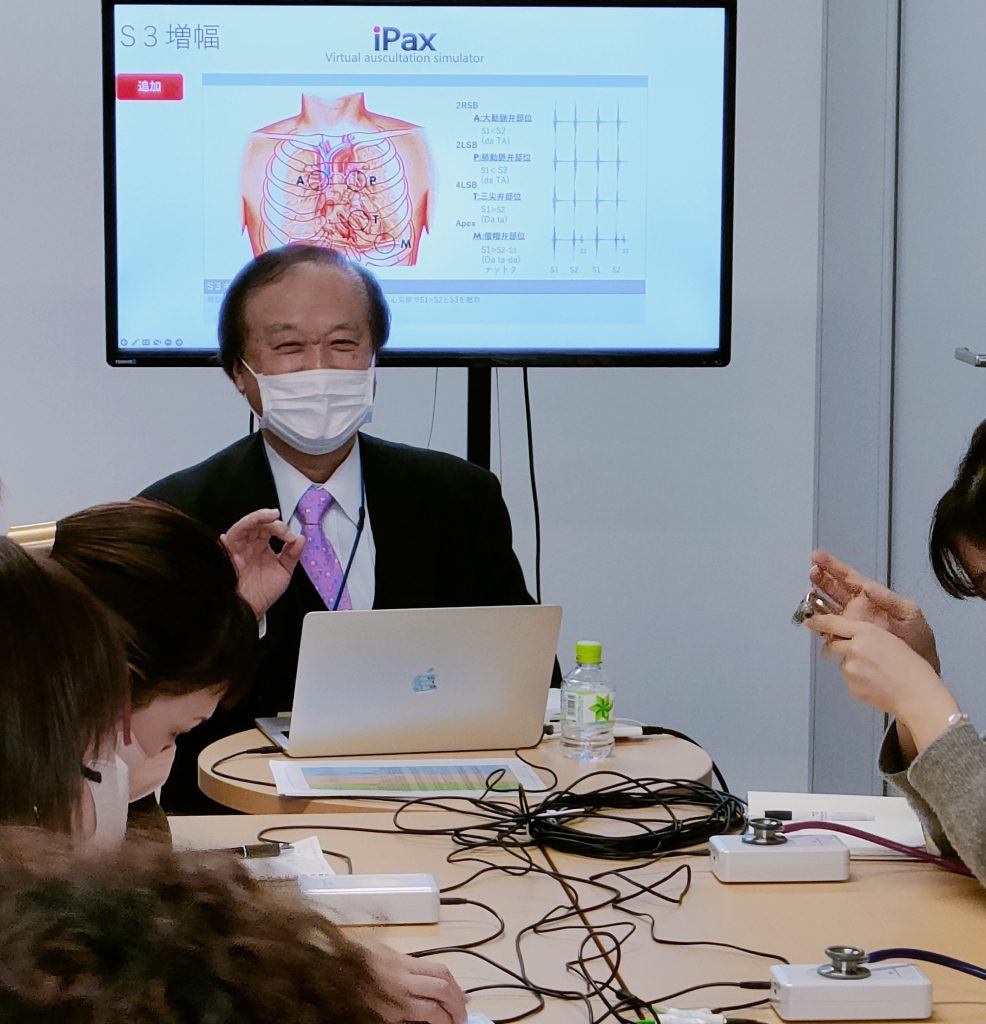
Cardiovascular Specialist Nurse Training , Using iPax and Kikuzo
A training course for nurses specializing in cardiology was held by Japanese Educational Clinical Cardiology Society (JECCS), using iPax and Kikuzo. The instructor was Dr. Masaya Kino, Chairman of JECCS, who explained how to distinguish between S1 and S2, and how S3 and S4 are generated, and it was impressive to see the students listening intently to the Kikuzo and nodding their heads.
iPax-QR codes about aortic stenosis were also distributed at the meeting. It was very well received.
February 25, 2023

Practical training in the Department of Physical Therapy using iPax and Kikuzo
Professor Kentaro Kamiya conducted auscultation exercises using iPax and Kikuzo for 47 third-year students of the Department of Rehabilitation, Kitasato university School of Allied Health Sciences.
In the past, training has been conducted using only one cardiology mannequin simulator, but it was not sufficient to ensure that all students received auscultation practice. So this time, we used iPax and kikuzo for the class.
Professor Kamiya praised the iPax and kikuzo, saying, “The iPax and kikuzo are convenient to carry, have good sound quality, and can even be used for palpation of the pulse. In addition, he evaluated, “Since it is possible to ‘share sounds’, which has been difficult until now, we can expect high-quality education.”
December 6,2022
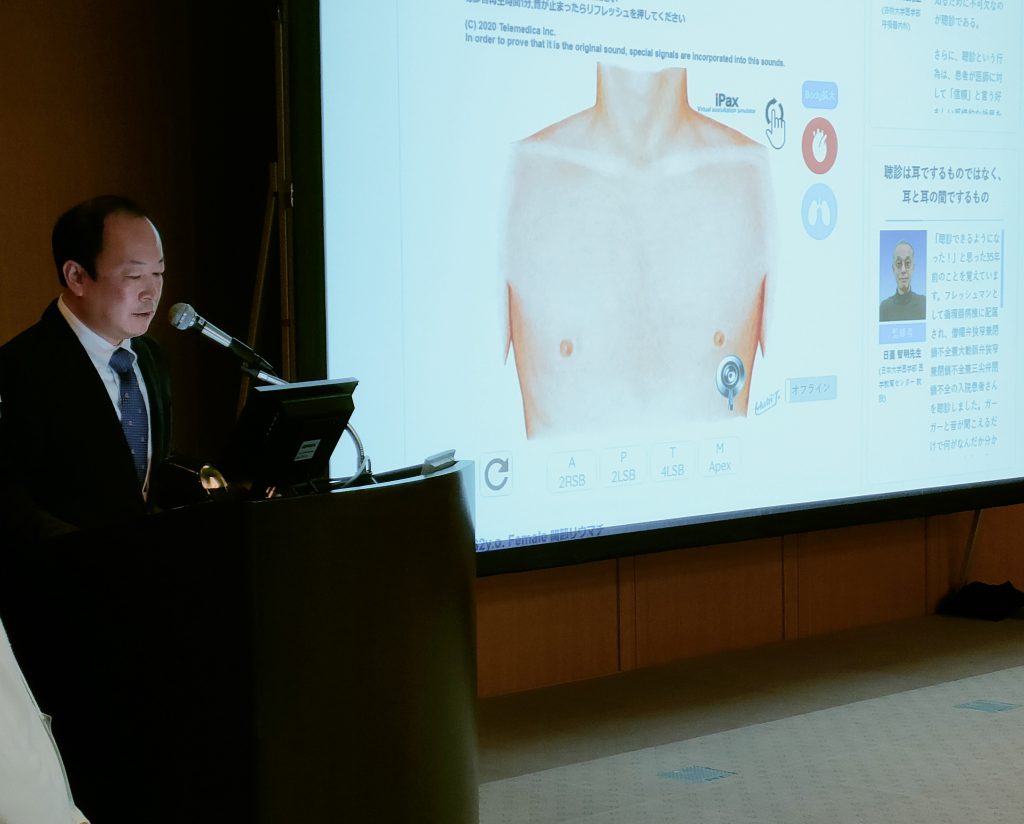
Pulmonary Auscultation Educational Seminar using iPax
Lung sounds (recordings) of actual cases of bronchiectasis and drug-induced pneumonia were loaded onto iPax and used in educational seminar ( the lecturer, Dr. T. Saraya, Department of Respiratory Medicine, Kyorin University). As a first try, some QR codes were given to the participants, which were highly appreciated.
December 4, 2022

Blood pressure measurement exercise with iPax : Two students practice auscultation and palpation at the same time
Koyo High School / Nursing Course
A pair of students are doing blood pressure measurement exercises. This is an example of using a blood pressure monitor to read each other’s answers.
The answers were completely different from each other, and they said, “Teacher, we want to do it again!” This is an example of a very lively exercise.
The academic advisor also evaluated, “Using iPax allows students to participate in the exercises enthusiastically. It is a wonderful simulator with a high educational effect.” December 2021

Trial by a US cardiologist
iPax report : Telemedica’s US deployment update
Dr. Rakesh Shah, a cardiologist at the St. Mary Medical Center in the suburbs of Philadelphia, Pennsylvania, tried auditioning Telemedica’s auscultation e-learning systems iPax and Kikuzo.Dr. Shah replyed “I think this system can bring benefits to medical students and medical professionals as a tool for practicing auscultation, and has great potential to help improve auscultation diagnostic skills in the United States.” We were also impressed that he nodded a lot during the audition, saying “the sound is very natural”.We will have Dr. Shah and his hospital cardiologist evaluate it in detail and use the results as a reference for our future expansion into the United States.
Quote:US consultant February 2022
Inquiry Form
~ Contact us ~
